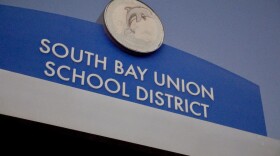MELISSA BLOCK, host:
Network news executives are facing a tough call of their own - how to cover the execution of Saddam? Explicit footage is likely to be available to the networks, and if so, it will quickly be available online as well.
NPR's David Folkenflik has the story.
DAVID FOLKENFLIK: Saddam Hussein is an unusually familiar dictator for American viewers. The U.S. has led two wars against him, and he's been interviewed by CBS and CNN several times over the years. When U.S. forces took Baghdad, they created a powerful symbol for television viewers by toppling his statues.
(Soundbite of T.V. show)
Unidentified Man #1: I wonder what Dominique de Villepin and Jacques Chirac are saying as they are watching right now.
Unidentified Man #2: Dominique of course -
FOLKENFLIK: And then U.S. troops found his spider-hole hideout.
(Soundbite of news report)
Unidentified Woman: Cheers erupted in Baghdad as U.S. officials showed proof that Saddam Hussein had been captured.
FOLKENFLIK: After Saddam's capture, his dental exam was videotaped and shown on American networks. His trial was televised including his repeated outbursts. And now, his death is about to be chronicled.
Sam Roberts says the networks and television news channels now face a stark question.
Mr. SAM ROBERTS (Former Foreign Editor, CBS News): Do you want to run a picture of him dropping down and watching the rope tighten around his neck, or hearing his neck snap?
FOLKENFLIK: Roberts is the former foreign editor for CBS News.
Mr. ROBERTS: I think that's beyond what most people would see as being in good taste. I know I wouldn't put that on the air.
FOLKENFLIK: Iraqi authorities have announced they intend to videotape his hanging, which is imminent. Executives at the networks have been anticipating and somewhat dreading this moment for weeks.
Phil Alongi is the executive producer for NBC News Specials. He says the network is waiting what, if any, images or videotape are released from the execution.
Mr. PHIL ALONGI (NBC News): Editorially, you have to have a reason to include this in the broadcast. If indeed, we feel that it is needed to verify that Saddam Hussein has been executed, we will decide what could be tasteful, and we will use discretion.
FOLKENFLIK: But a former executive at NBC's rival says it's hard to get it right.
Mr. TOM BETTAG (Discovery Channel): Well, you hate this decision right at the very beginning because you know whatever you're going to offend a lot of different people.
FOLKENFLIK: Tom Bettag is the former executive producer of ABC News' “Nightline” and the “CBS Evening News,” and he's now with the Discovery Channel.
Mr. BETTAG: The general rule that you always use is that you do not show identifiable dead bodies. You definitely do not show people being killed.
FOLKENFLIK: Bettag says it's easy to rule out using it on any evening newscasts. But the knowledge that any video footage would be instantly posted on various Web sites may make it tough for television channels to resist.
Mr. BETTAG: If a cable news network that says at 10 o'clock, we're going to show the whole thing, there will be a huge audience for that. There would be lots of people who are offended, who would complain about it, but there's a huge incentive to bring people to the set.
FOLKENFLIK: Still-pictures of deposed Romanian dictator Nikolai Ceausescu were shown after he was shot, but there was no video footage. NBC's Alongi recalls NBC handled it similarly when Saddam Hussein's sons died.
Mr. ALONGI: We warned our viewers ahead of time that there's going to be a graphic picture coming up that may upset you. If indeed this will, please turn away.
FOLKENFLIK: David Folkenflik, NPR News. Transcript provided by NPR, Copyright NPR.






